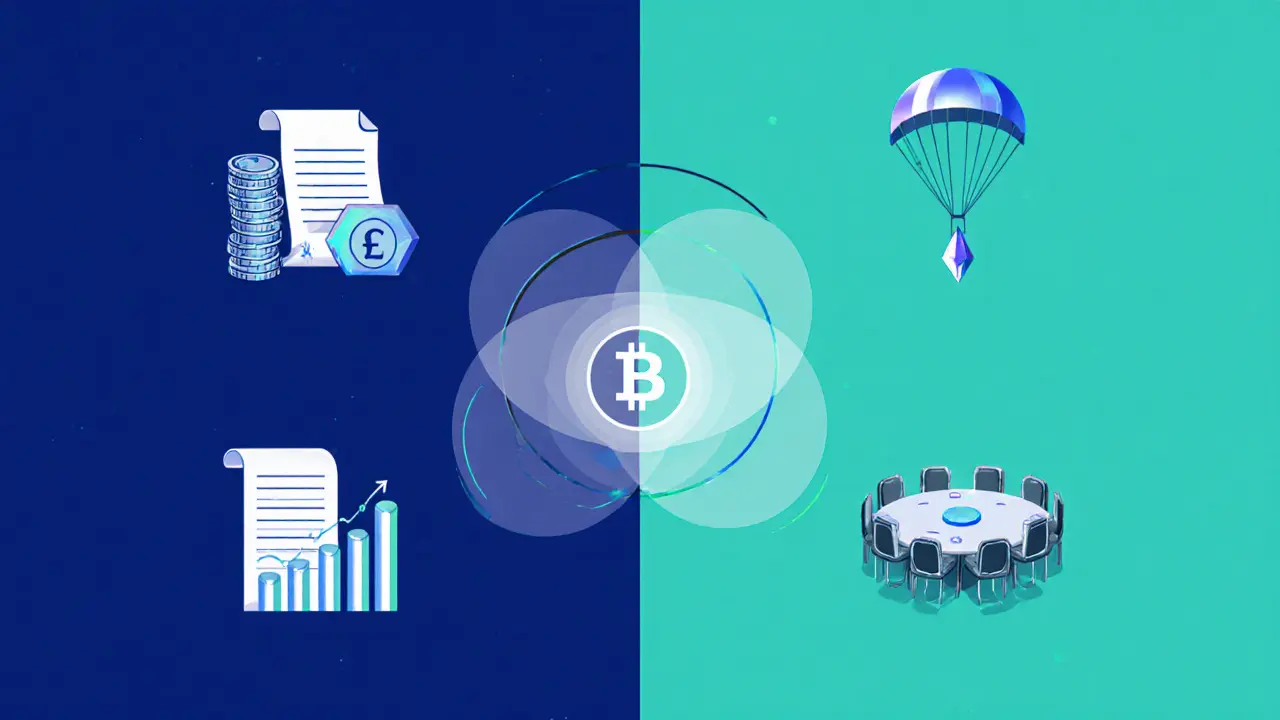Crypto Token Allocation – Everything You Need to Know
When dealing with crypto token allocation, the process of dividing a cryptocurrency's total supply among founders, investors, advisors, and the community. Also known as token distribution, it determines who holds what and when they can trade it.
Tokenomics, the economic model that defines a token's supply, utility, and incentive structure directly influences crypto token allocation because it sets the rules for how many coins go to each stakeholder. An airdrop, a free distribution of tokens to a target group, is a common tool for seeding a community and shaping early allocation. Meanwhile, a vesting schedule, the timeline that unlocks allocated tokens over months or years prevents large holders from dumping all at once and protects the market stability.
Understanding crypto token allocation helps you see why some projects skyrocket while others stall. If a token’s allocation gives too much to the team, investors may fear future sell pressure. Conversely, a balanced allocation with a clear vesting plan can boost confidence and attract long‑term holders.
Key Elements That Shape Allocation
First, the total supply defines the ceiling. Projects often cap supply at a round number (e.g., 100 million tokens) and then slice it into buckets: public sale, private sale, team, advisors, ecosystem fund, and community rewards. Second, tokenomics decides how each bucket adds value—staking rewards, governance rights, or utility in a DApp. Third, airdrops act as a shortcut to community building, giving early users a stake without requiring purchase. Fourth, vesting schedules stagger release dates, usually with a cliff period followed by monthly or quarterly unlocks.
These pieces connect in simple ways: crypto token allocation encompasses token distribution; tokenomics influences how much each participant receives; an airdrop determines a portion of allocation for community incentives; a vesting schedule controls when allocated tokens become liquid; and regulatory compliance can reshape allocation rules to meet jurisdictional requirements.
Regulators in the US, EU, and Asia increasingly look at token allocation structures to decide whether a token is a security. Projects that disclose clear allocation charts and vesting terms are more likely to pass compliance checks and list on reputable exchanges.
From a trader’s perspective, the allocation table is a cheat sheet. Spotting a large team reserve with a short vesting period signals potential price pressure. Noticing a sizable community airdrop can indicate future demand as recipients start using the token. And a well‑designed tokenomics model often correlates with sustainable price growth.
Below you’ll find a curated set of articles that unpack each of these angles. Whether you’re curious about a specific token’s allocation, need a step‑by‑step guide on calculating vesting, or want to compare airdrop strategies, the collection offers practical insights you can apply right away.

Utility Token Distribution Models: A Practical Guide for Tokenomics Design
Nov 13, 2024, Posted by Ronan Caverly
Explore paid and free utility token distribution models, their legal implications, design considerations, and practical steps to build a fair, compliant tokenomics strategy.
MORESEARCH HERE
Categories
TAGS
- decentralized exchange
- crypto exchange review
- cryptocurrency
- crypto coin
- CoinMarketCap airdrop
- smart contracts
- tokenomics
- cryptocurrency exchange safety
- crypto exchange
- cryptocurrency airdrop
- crypto airdrop
- cryptocurrency exchange
- crypto airdrop guide
- blockchain token distribution
- DeFi
- crypto exchange scam
- crypto airdrop 2025
- Ethereum
- cross-chain interoperability
- ERC-20
